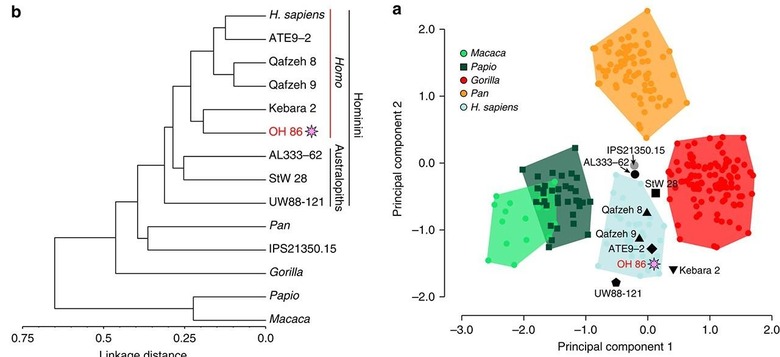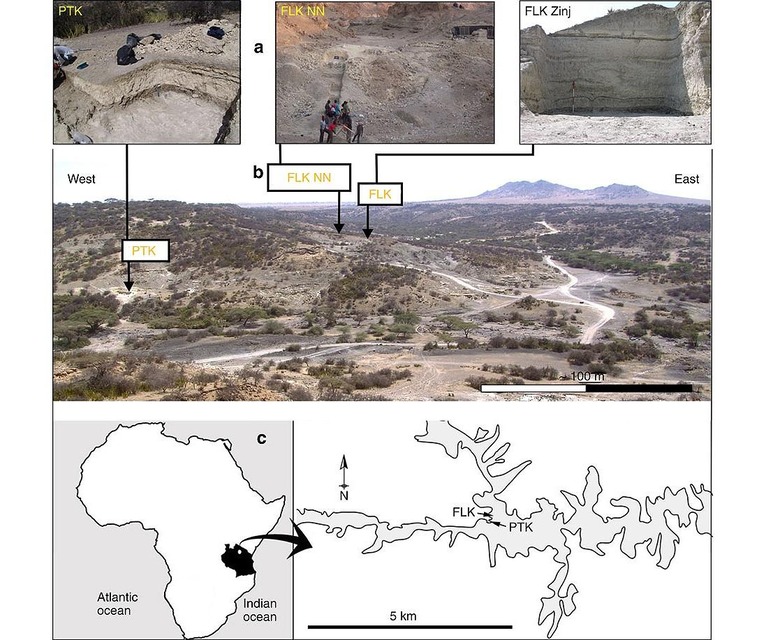Earliest Modern Human-Like Bone Found In Tanzania
A new dig in Tanzania uncovers a finger bone which appears to belong to the earliest known example of a human-like animal in the history of the world. What we're looking at here is the base of a pinky finger, coming from a hand with modern human-like (MHL) anatomy, made to grip. This bone is known as OH 86, Olduvai Hominin 86, and it comes from an older-than 1.84-million-year-old dig site Philip Tobias Korongo (PTK) at Olduvai Gorge (Tanzania). This is now the earliest MHL hand bone in the fossil record.
According to researchers, this bone belongs to a humanoid (Olduvai Hominin) that co-existed with previously discovered humanoids Paranthropus boisei and Homo habilis. Together they walked the planes of Africa at Olduvai in Tanzania during the Bed I age.
This bone is particularly significant due to its inclusion in the MHL hand anatomy debate. This bone appears to share characteristics with similar hand-bones which show signs associated with grips and "the invention and use of stone tools."
This bone's size and shape differ in two places from previous finds. One is in size and shape from all previously found australopiths. This bone also differs slightly from all bones of penecontemporaneous and geographically proximate OH 7 partial hand skeletons (part of the Homo habilis holotype) previously discovered.
This study suggests that OH 86 is closely linked to Kebara 2, an offshoot of the humanoid (Hominini), one of the most distant cousins of Homo Sapien, but born of the same origins nonetheless. Have the peek at the chart below to see how closely OH 86 relates to our own species.

Next you'll see the bone itself. Such a tiny thing. "The OH 86 hominin manual proximal phalanx in (from left to right) dorsal, lateral, palmar (distal is top for each) and proximal views. Scale bar, 1 cm."

BELOW: New PTK site (OH 86 proximal phalanx excavation site) "compared with two other major and penecontemporaneous Middle Bed I (Olduvai Formation) sites of FLK 22 Zinjanthropus and FLK NN that also occur near the junction of the Main and Side Gorges." (a) Informal views of excavations at each site. (b) Relationship of the sites in aerial view; lower middle image=a panoramic view of the Gorge looking north, with PTK indicated. (c) Political map of Africa with Tanzania highlighted in black and the approximate location of Olduvai Gorge represented by white dot and a schematic plan view of sites near the junction of the Main and Side Gorges.

For more information on this bone, see the study "Earliest modern human-like hand bone from a new >1.84-million-year-old site at Olduvai in Tanzania
" as published by Nature. This study was authored by Manuel Domínguez-Rodrigo, Travis Rayne Pickering, Sergio Almécija, Jason L. Heaton, Enrique Baquedano, Audax Mabulla, and David Uribelarrea, and can be found with code doi:10.1038/ncomms8987
